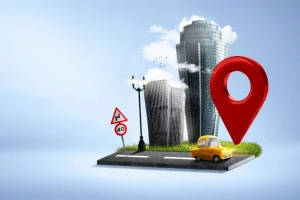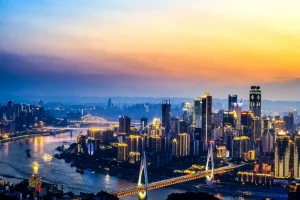Imagining the Post-Pandemic Future of Workplace Design
Published on
It has been year since the pandemic disrupted our lives in unimaginable ways. Everything from getting a morning coffee to travelling on an airplane to gathering in public spaces has changed. There is a sense of fear and caution applied at each step of our daily lives and professional spaces. Until last year, most of us spent majority of our time at our workplace or professional environments. In the past year, hardly anyone has stepped into their offices.
Earlier this year, McKinsey conducted a research on the transformation of people’s lives post COVID-19 and how they adapted to working from home. Unsurprisingly, 80% said they enjoyed working from home and 41% of them, in fact, said that they felt they were more productive than from their erstwhile workplace. From Google to Amazon, enterprises have extended work-from-home options; conglomerates like Hitachi even promise permanent remote work for a vast majority of their people.
While we’re still in the midst of finding solutions to handle the effects of the virus, it is only natural to assume that COVID-19 has drastically affected our workspaces, unlike ever before. But truth be told, workspaces have always been evolving, adapting to major changes, over the last century.
As a workspace designer, I’ve found myself fascinated by how commercial architecture has adapted to changing times — from the tall 6ft. cubicle farms of the 1980s to the WeWork-esque open planning, flexible co-working spaces of the 2010s. The advent of computers changed the offices of the 70s: Larger desks, individual working pods and so on. The 80s brought with them the aesthetics of glass partitions and concrete, making office spaces more appealing with clean lines and open transparent walls. This is also the era of charismatic bosses, corner offices and liquor cabinets.
The new generation of the 90s needed more freedom, collaboration and even self-expression. This brought scissors to the extravagance and made workspaces more utilitarian, functional, open-plan, activity-based etc. I had the good fortune of experiencing the transformation of the Chicago office of a Fortune 500 retailer. I saw first-hand how physical space can come to represent innovation, culture, inclusion, diversity, even corporate philosophy. This only grew stronger in the last decade, with creches, gyms, and recreation zones becoming an integral part of employee-centric spaces.
As we slowly find our footing in the next decade, if there’s one thing I take into the future, it’s that office design has always been a true reflection of its time. It has been shaped by the cross-pollination of cultural, technological, philosophical and practical influences. COVID-19 is simply one such influence, even if it feels disproportionately large in the present.
In conversations with some of the world’s most forward-thinking enterprises, it appears that leaders are taking the time to rethink the role the office environment plays in their organization. While design parameters such as sustainability, inclusivity, comfort and agility continue to remain elements of new age design of any work environment, most designers and organizations are focussing on two very important aspects: Employee wellness and productivity enablement.
From health-and-safety to employee wellbeing
Anyone who has built or managed an office would know that health-and-safety is an important requirement, at least in part for compliance reasons. Authorities throughout the globe have made stricter laws in the last 50 years to prevent exploitation and ensure safety in the workplace. It’ll be fair to say that modern workspaces are by and large far safer than their historical counterparts.
In the post-COVID world, though, this alone isn’t enough. The pandemic has opened up conversations around unproductive meetings, fatigue, stress, burn outs, work-life balance and so on.
The new normal will have the employee well-being as a big influencer of space design.
This might take the form of spaces to do focussed work, more break areas, mental health support, perhaps even multiple smaller offices within the same city to reduce commute times. Operations and management of these spaces will play a vital part as well.
Towards a phygital workplace
COVID-19 has changed the very definition of ‘workspace’. Until recently, we were attuned to thinking about workspaces as physical offices that provide different environments for focussed and collaborative work. Even though ‘Zoom rooms’ and ‘Hangouts’ came into our lexicon in the early 2000s, they were treated more as a means of basic communication — say, like the telephone line — until early this year.
Today, though, a virtual office is commonplace; products such as Zoom, Teams etc. are incorporating features like whiteboards and breakout rooms, enhancing the visual communication to mimic the real-world workspace. This year has been a game changer for all organizations and as the prediction goes post 2020, the lines between ‘real’ and ‘virtual’ lives will blur.
The new normal needs to make it seamless for in-person and virtual teams to collaborate.
This opens up a world of possibilities in both hardware and software development. Imagine a conference room setup — projectors, monitors, good quality audio devices, connectors etc. — that can instantly pop up in anyone’s home office or the nearest co-working space.
While the hub-and-spoke model is being considered by most companies, there is an alternate scenario of creating hybrid workspaces – spaces where those in-person and remote feel the same sense of belonging and companionship. How do you make someone working from their attic in their pyjamas feel less isolated compared to the one who works in the middle of a bustling office?
Building sync into asynchronous conversations
Remote working as a concept is now the new norm. But in reality, remote teams don’t work on the same tasks at the same time. You’d likely come across a situation where one team member posts a Slack message in the morning, another member responds in the afternoon, and a third member sees these trail messages the next morning and so it goes. There’s a reason everyone wants to ‘jump on a quick call’ — asynchronous communication isn’t the most efficient. Business stakeholders and the workspace designers need to come together to find an effective solution – what works for one organization may not work for another. Approaches will vary, environments will need to be unique as well.
In order to accommodate the various situations and needs of employees, workspaces of the new normal need to make asynchronous collaboration effective.
Way Forward
It’s going to be an interesting journey of experiments and discoveries for most organizations. For every voice hailing the comfort of working from home, there is a counterpoint showing the fatigue setting in among those working remotely. There is no proven study/metrics that guarantees that hub-and-spoke or hybrid or work-from-home models work for all employees today.
And it’s more than just a location map guaranteeing success of an employee/team. Many physical and personal factors will play an essential part in their wellbeing. The workspace will not remain the same and the metrics of determining space allocated to each individual will evolve. The workspace needs to be reimagined to accommodate various work environments, while ensuring productivity and safety of teams.
Technology will play the most important part in these designs. Tools and products will need to be explored and developed to engage the teams in a successful manner. This is going to be a revolutionary change in workspace design and no single designer/organization can pave a path of truth yet.
As an integral part of the design community in India, I would like to urge the fraternity to form consortiums across geographies, share experiences and data from various employees, collaborate to share knowledge and contribute to the emerging workspace trends.
It has been year since the pandemic disrupted our lives in unimaginable ways. Everything from getting a morning coffee to travelling on an airplane to gathering in public spaces has changed. There is a sense of fear and caution applied at each step of our daily lives and professional spaces. Until last year, most of us spent majority of our time at our workplace or professional environments. In the past year, hardly anyone has stepped into their offices.




